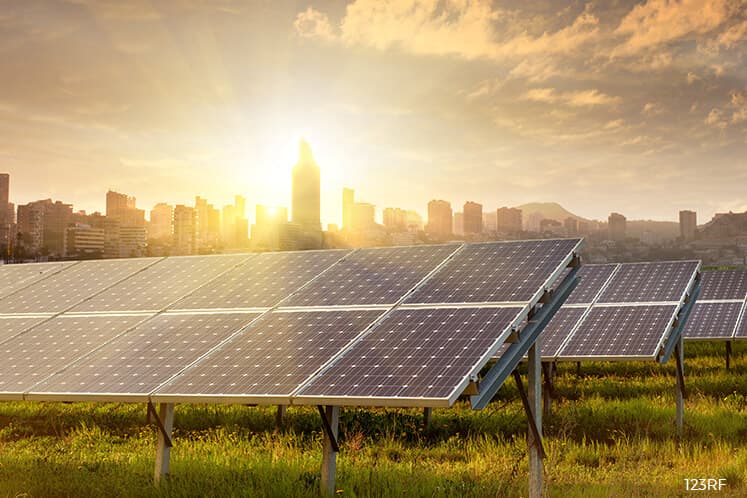
OVER the past couple of weeks, some may have noticed a number of solar photovoltaic (PV) projects being announced by Tenaga Nasional Bhd (TNB), awarded under the 2017/2018 large-scale solar (LSS) competitive bidding programme led by the Energy Commission (EC).
Against this backdrop, Minister of Energy, Green Technology and Water, Datuk Seri Maximum Johnity Ongkili, unexpectedly announced the extension and expansion — by five years and RM5 billion respectively — of the Green Technology Financing Scheme (GTFS) earlier this month.
The GTFS is a pivotal sweetener for the solar PV industry. It offers a 2% subsidy on interest costs for green projects, including renewable energy like solar, which is borne by the government.
Simply, one can think of it as boosting the returns on the LSS project by 2%.
This comes on top of the already lucrative tariffs of the 21-year LSS concessions. Hence, it is no wonder many companies are clamouring for a slice of the LSS pie, even if they do not have any experience.
TNB only announced six of the winners, and only for projects above 30mwac. Including smaller capacities, the EC has awarded a total of 18 projects under its LSS programme. Many of these companies do not appear to have had prior experience in solar projects.
But that should not be a problem for execution. In fact, that is half the beauty of these LSS projects.
While the EC’s request for proposal clearly states bidders should “have previous experience in implementing power or related projects, including project financing and operation of power plants or electrical installation”, this does not appear to be a hard requirement.
From a practical viewpoint, potential bidders merely need to identify a piece of unproductive land with suitable connection to the grid and appoint an engineering, procurement and construction contractor to do the rest of the work.
In turn, these companies become a mini-independent power producer (IPP) generating a steady income stream over 21 years.
On average, 1mwdc of solar capacity in Malaysia generates about 1,200mwdc hours per year. Based on a tariff of 40 sen per kWh (the average for LSS), 1mwac of solar can generate a revenue of at least RM480,000 a year.
(Note: DC to AC conversion losses range from 5% to 15%. Taking this into account, this revenue calculation is conservative by the same margin.)
In contrast, the estimated cost of solar panels is as low as RM4.50 per watt, or RM4.5 million per megawatt. Ignoring financing costs, highly conservative estimates point to a yield of 11% or an investment payback period of nine years. This does not include land costs.
In total, the 2017/2018 LSS programme should see about 400mwac of capacity installed. For perspective, the current total installed solar capacity under the feed-in-tariff programme is only 298mwdc, with another 96.7mwdc in the pipeline.
Also, keep in mind that the 2019/2020 LSS programme is already underway with a planned capacity of 460mwac. Bids are due by end July.
On top of that, the EC has awarded solar capacity outside the LSS programme. Quantum Solar Park Malaysia Sdn Bhd was awarded 150mw of solar PV capacity on a direct basis. This raised eyebrows as one of the indirect shareholders is Umno Supreme Council member, Datuk Sohaimi Shahadan.
The tariffs for this project were not revealed but are said to be substantially higher than the competitive bidding tariffs.
Including yet-to-be awarded capacity under the 2019/2020 LSS programme, there is about 1,000mwac of solar PV to be built in the next few years. Ballpark estimates place the total cost at RM6.3 billion. But more impressive is the revenue it is estimated to generate annually. Assuming a tariff of 40 sen per kWh, the budding solar-IPP industry will rake in RM480 million per annum.
And the best part is that the government will not have to spend a single sen. The consumers will pay.
Save by subscribing to us for your print and/or digital copy.
P/S: The Edge is also available on Apple's AppStore and Androids' Google Play.